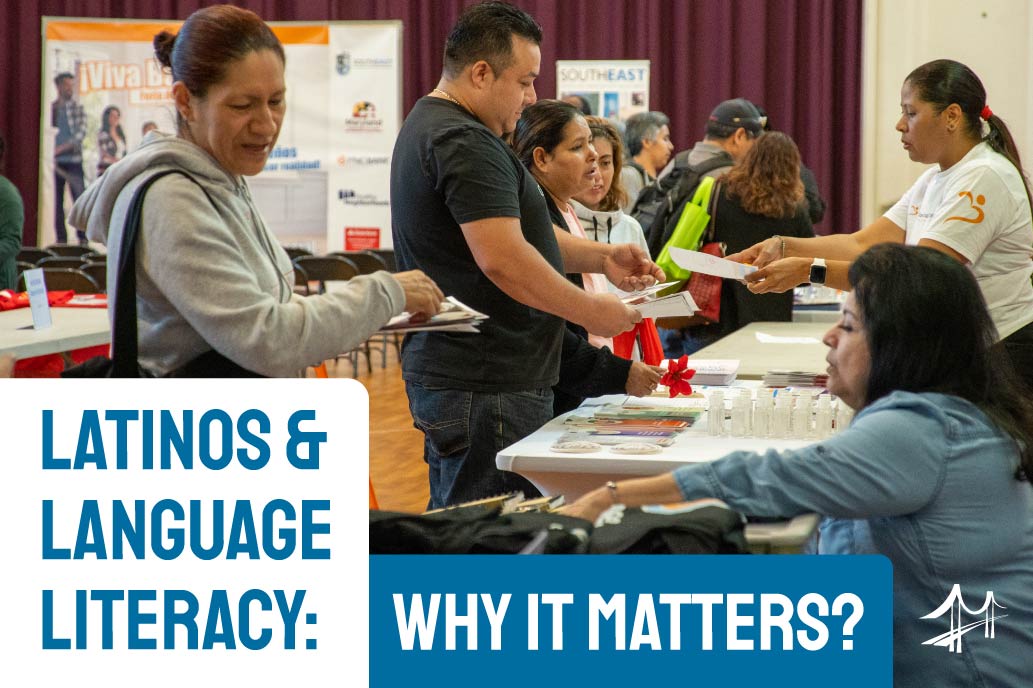How to Serve Limited English Proficiency Communities
Imagine the frustration and challenges of trying to navigate the intricacies of daily life, whether it’s accessing vital services or understanding information, while grappling with a language in which you are not fully proficient. Sounds difficult, right?
In today’s increasingly diverse society, effective communication is essential for organizations aiming to expand their reach, find employees, access funds, or gain new clients or market share. In the United States, one significant demographic that should not be overlooked is the low-literacy population. With limited reading and writing skills, this group presents unique challenges but tremendous opportunities.
By understanding the importance of literacy levels, ensuring your staff is appropriately trained and remains informed with relevant data, equipped tactics and tailoring your operations to include language services – it is not as complicated as it reads! – you can effectively engage this mostly neglected segment of the U.S. population.
Limited English Proficiency & Literacy
According to the U.S. Census Bureau, limited English proficiency (LEP) refers to individuals over the age of 5 who reported speaking English less than “very well.” Per recent reports, over 62 million people, both foreign-born and native-born, spoke a language other than English at home, and while most of these individuals were also proficient in English, about 41 percent, or 25.1 million people (about the population of Texas), were considered to have limited English proficiency. Although most LEP individuals are immigrants, nearly 19 percent, or approximately 5 million are U.S. citizens, people born here in the United States to immigrant parents. The LEP population has been steadily growing, mimicking the substantial growth in immigration trends, which emphasizes the need for organizations to adapt to connect with this audience effectively.
LEP individuals face unique challenges; limited reading and writing skills hinder the ability to understand complex information, follow instructions, and access important services and resources available for the general population. As a result, this group may struggle to navigate various aspects of daily life, including healthcare, financial services, and employment opportunities.
Let’s try with a real-life example: Imagine living through the middle of the pandemic and seeking to communicate quarantine requirements or explain a course of treatment to a LEP individual to ensure you can quickly establish rapport and trust and they can quickly understand you to comply with your instructions.
Not easy under normal circumstances, correct? Can you imagine how complicated this situation becomes when one party has limited English proficiency?
Companies and organizations that acknowledge and address these barriers can gain a competitive edge and begin to engage this diverse community by providing tailored language services that bridge the literacy gap.
Seamless Communication Made Easy with Translation and Language Services
In addition to providing a competitive advantage, offering high-quality translation and language services enables you to:
- Save money & avoid errors: using the incorrect word or tone can significantly harm an organization. Professional or certified translation services are crucial in avoiding misunderstandings, and ultimately saving expenses from re-printing and correcting materials.
- Minimizing liability: and the elephant in the room, is the risk of liability. Accidentally misinforming someone due to a poor or erroneous translation can lead to legal action… which is not just costly, monetarily, but also causes tremendous damage to your reputation.
Implementing language services does not have to be a substantial investment. Begin with a few basic services, such as offering multilingual support over the phone through a third-party telephonic interpretation provider that offers on-demand access to professional interpreters (often ANY language!).
Another easy fix: start by translating the vital or important organizational documents such as terms and conditions, informational brochures, or frequently asked questions into different languages. Other important examples: Healthcare/Medical practice, discharge Instructions, post-op instructions; Daycare Center or School, translate any special Parent Communications. These simple steps go a long way to minimize risk, while effectively engaging LEP communities.
More Than Translations: Outreach & Training
Another proven best practice to effectively engage LEP individuals is to go beyond translations or language services and actively hire outreach experts who know and understand these communities. These are trusted voices, with lived-in experiences; these experts can provide valuable insights and guidance in developing appropriate tactics, designing accessible materials, and delivering culturally appropriate outreach campaigns that are authentic, relevant, and impactful.
The importance of language diversity in hiring and training staff is evident in many industries in the U.S. In 2020, 30% of construction workers were Hispanics, and more than 38% of them had less than a high school education. By hosting targeted recruiting campaigns and providing training materials and resources in the candidate/employee’s native language, organizations ensure that their staffing needs, training instructions, guidelines, and procedures are accurately conveyed, increasing engagement, and minimizing the risk of misinterpretations or misunderstandings.
Incorporating these initiatives not only promotes inclusivity but also builds trust and fosters stronger connections, leading to more effective outcomes for your organization and the communities served.
Win-Win: Leveraging the Opportunities and Doing Good
Establishing effective communications with diverse demographic groups is crucial for organizations. By remaining informed and connected with the LEP community, your organization now has access to an untapped and under-served market with significant growth potential. Perhaps your organization can have a profound impact on the lives of many LEP individuals─ empowering social and economic stability through sustainable living wages. Authentic engagement goes beyond language services; it requires a deep commitment to understanding the lived experiences of people, addressing their barriers, and building meaningful connections. By embracing this approach, you can effectively unlock untapped market opportunities and also foster sustainable social change, engaging the one in 10 working-age U.S. adults (19.2 million people aged 16 to 64) who are limited English proficient.
At Cool & Associates, we understand the importance of developing effective outreach and messaging tactics that authentically connect with LEP groups. By leveraging our expertise, we can help, providing support with your translations and language services, trainings, outreach campaigns, and marketing and collateral materials – from spot checking the work or handling the whole process. Let us help!
Image: ©[William Navas]


